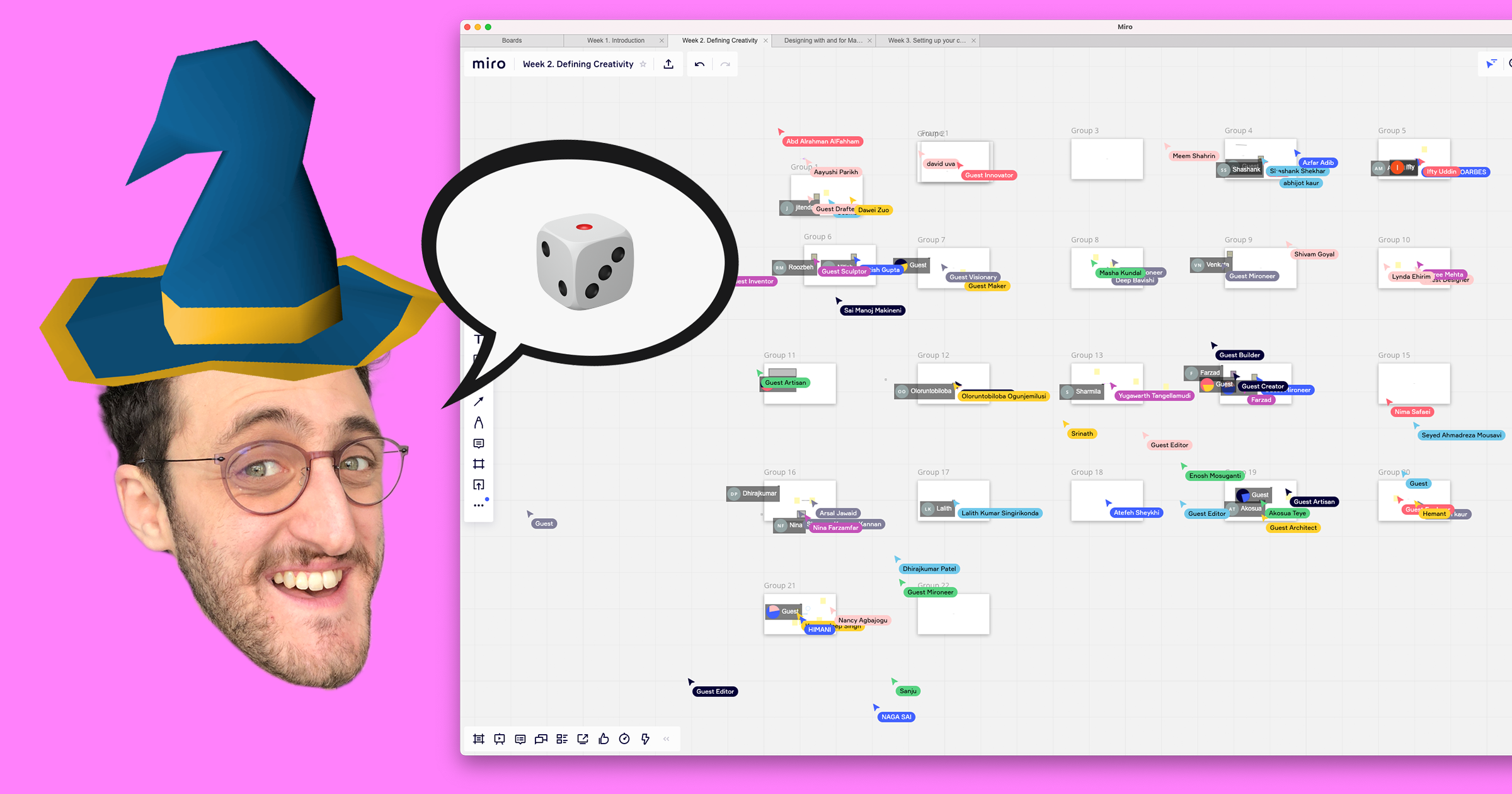My online lecture on Creativity, Innovation, and Critical Thinking has more than 90 students enrolled this semester. Even before COVID-19, I was constantly searching for new ways to keep the class experiential for such a large group of students.
When the university announced last year that the course would be online, I had to revise my way of teaching from the ground up. I started by looking at how online classes on sites like Coursera and Udemy are structured. The common format was to alternate pre-recorded videos and follow-up activities, with some live events thrown into the mix.
Using this structure for my class worked out decently the first year, but it still felt like there was a lack of cohesion. The students showed a lot of engagement on the forums, but they seemed to crave something more. It was common for them to hang around after class, clearly craving the campus atmosphere they had been deprived of due to the pandemic.
When I decided to revise the course this year, I knew I wanted to make the structure more collaborative. This time around, I turned to online video games for inspiration. After all, they’re social, digital, interactive, and engaging. Unfortunately, they also tend to be very complex and require a lot of familiarity with technology.
I learned this the hard way during the first session. I launched the students into a virtual whiteboard with no preparation, expecting them to understand the tools and how to orient themselves. The feedback was overwhelmingly negative, with many students complaining they were confused and frustrated.
As I reflected on that experience and gathered feedback from my teaching assistants, another metaphor emerged. The pacing and structure required to facilitate virtual learning is more reminiscent of a board game than a video game. The dynamics feel like an online game of Dungeons and Dragons, where the Dungeon Master frequently intervenes with prompts and instructions.
This doesn’t mean more chaotic, unstructured environments can’t work for online learning. Rather, they require much smaller groups of people who are familiar with the tools and informed about the topic. This just isn’t the case in my class, where most students are engineers being exposed to the fuzzy world of unstructured thinking for the first time. For this type of learner, using fancy joysticks to roam around a map is useless when they don’t even know which dice to roll.
